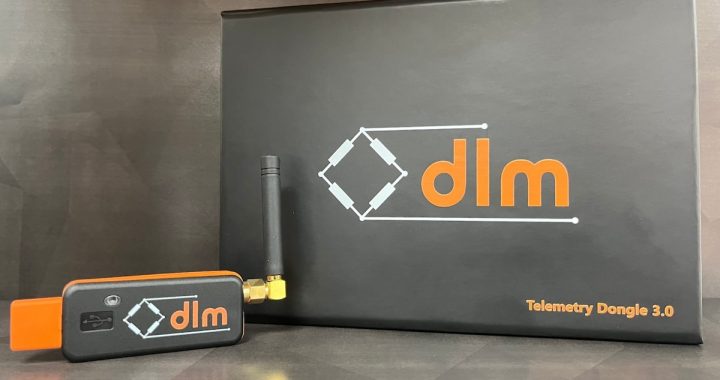DLM Adds USB to Software Suite
Dynamic Load Monitoring (UK) Ltd. (DLM), of Southampton, UK has added wireless dongle (USB) technology to its suite of software.
DLM is a specialist in the design, manufacture, repair, and calibration of load cells, load monitoring, and cable working equipment for the offshore, renewable energy, marine, subsea, and lifting and rigging industries. It has developed a suite of state-of-the-art technology and software that complements an advanced range of standard hardware.
Designed in-house by DLM’s team of engineers the new TD-3.0, along with all software, is Microsoft Windows based and can be used to generate certificates, log data, or show live readings. The TD-3.0 will be UKCA, CE, FCC, and IC-approved, in line with other TW-3.0 products, making it fully compliant for use. The existing TW-3.0 suite includes a running line monitor (RLM) display, multi-logger, load test, data-logging, and centre of gravity software.
Ryan Phillips, technical manager at DLM, said: “The TD-3.0 is designed to receive data from our load cells over a wireless connection. Clients can use it to replace a handheld display or in conjunction with a handheld. The dongle essentially plugs into a PC, and gets the data from the wireless load cells, combining with our software for display and data-logging. You would place a load cell somewhere in your application, for example, carrying out a proof test, then connect the load cell to the PC software wirelessly, using the dongle.”
Compatible with all TW-3.0 products
Phillips reiterated that, as the dongle works on DLM’s proprietary protocol, it can communicate with each of the manufacturer’s wireless products.
The TW-3.0 RLM allows users to connect to four running line monitors to show tension, speed, and distance values being measured by each device. Multi-logger software, designed to complement the TW-3.0-T range, is used for monitoring and logging data for up to 24 load cells, including wireless compressive load cells, telemetry tensile links, and telemetry load shackles. TW-3.0 load test software, meanwhile, complements products for the lifting sector and is used as a tool for assisting the recording of test results and generation of certificates.
Also in the range is data-logging software, where the applied load on the load cell is recorded and a live graph against time and date can be viewed; and centre of gravity software, for calculating and visualising the centre of gravity for any objects weighed by TW-3.0 load cells. Here, up to 12 load points can be monitored and analysed dynamically within one PC display. Additionally, the entire dataset during the measurement process can be easily logged to a single CSV file for future reference.
Phillips added: “Some clients wanted to feed the output from our load cells directly into their computer. The dongle allows us to get the load, speed, and distance readings for various types of equipment displayed on the PC without using a handheld device, just using the PC as the main receiver / display. It takes away the need to have a handheld connected via a USB cable. You can still use a handheld if desired—it just makes it easier getting it into the PC.”
There will still be applications where both handheld and wireless dongle technology will be utilised simultaneously, say, when the user wants to run software on the PC for data-logging. A customer could have a PC on the bridge of a ship connected to their survey suite, but then the deckhand could also have a local display to look at during operations.”
more about DLM on www.dlm-uk.com


